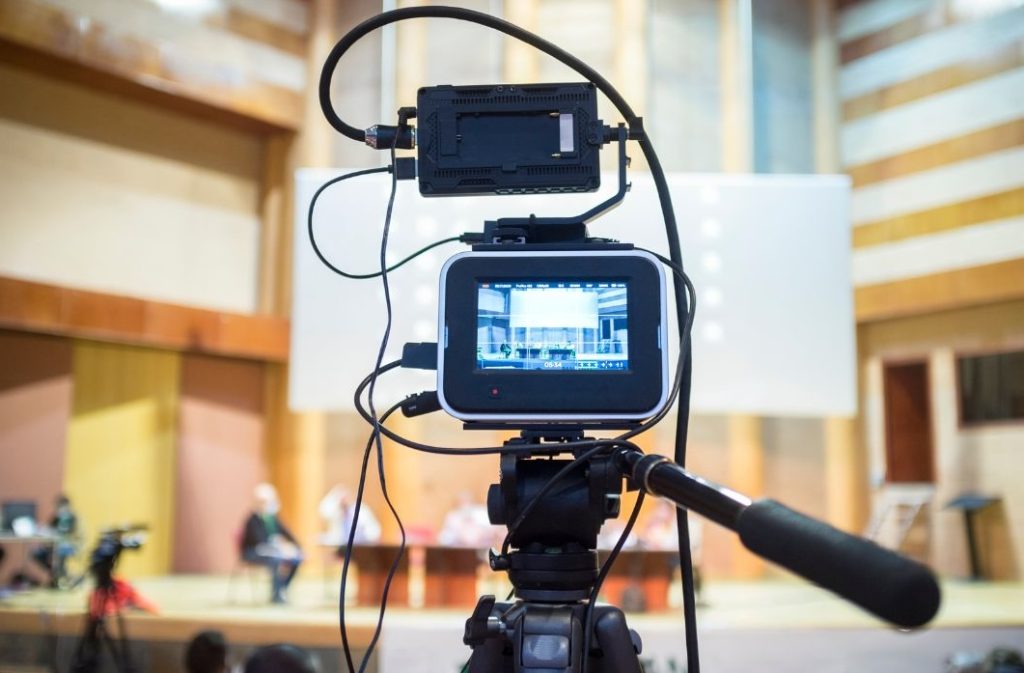In modern broadcasting, fibre optics have become a welcome technological development.
The rapid advancements in media transmission have necessitated more efficient and reliable methods of data transfer, making fibre optics indispensable.
Compared to traditional copper cables, fibre optics offer superior performance, revolutionising how we handle data-intensive tasks.
This article looks how fibre optic cables transmit data efficiently and the top ten benefits of fibre optics in broadcasting, highlighting their advantages over copper cables in improving bandwidth, minimising signal loss, and providing immunity to electromagnetic interference.
1. High Bandwidth

Fibre optic broadband cables provide significantly greater bandwidth than copper wires, which is required for high-definition broadcasting.
This increased bandwidth supports higher data rates, and the streaming of multiple channels or content simultaneously.
High bandwidth is particularly great for applications such as live streaming, video conferencing, and broadcasting in HD and 4K resolutions.
2. Low Signal Loss
Signal loss, or attenuation, refers to the reduction in signal strength during transmission. In broadcasting, maintaining signal integrity over long distances is needed.
Fibre optics excel in minimising signal loss and high-quality transmission over extended ranges.
Unlike traditional copper cables, fibre optics experience minimal signal degradation, making them ideal for broadcasting applications that require consistent and reliable signal strength.
3. Immunity to Electromagnetic Interference (EMI)
Electromagnetic interference (EMI) can significantly affect signal transmission, causing disruptions and loss of data integrity.
Fibre optic cables are composed of glass or plastic, which are not conductive, providing inherent immunity to EMI.
This makes fibre optics an excellent choice for broadcasting environments where EMI is a concern, such as in live event coverage and locations with high electrical interference.
The robust immunity to EMI ensures uninterrupted and clear signal transmission.
4. Secure Transmission

Fibre optic transmission offers enhanced security, making it less susceptible to tapping and breaches. The difficulty of intercepting light signals contributes to this security.
Inherent Security Features
Fibre optics transmit data via light pulses, which are hard to intercept without detection. Any attempt to tap the fibre results in noticeable signal loss, alerting the network.
Reduced Susceptibility to Breaches
Unlike copper cables, which can be intercepted electronically, fibre optics are more secure for transmitting sensitive content.
Importance of Secure Transmission
Secure transmission is crucial for broadcasting sensitive content. Fibre optics ensure data remains confidential and intact, preventing significant financial and reputational damage.
Real-World Examples
- News Broadcasting: Protects sources and sensitive information.
- Corporate Communications: Safeguards proprietary information.
- Government and Military Broadcasts: Ensures secure transmission of classified information.
For more on the security of fibre optics, see our comparison blog of fibre optic versus copper cables.
Fibre optics are essential for secure data transmission in broadcasting, protecting sensitive information as demand grows.
5. Long Transmission Distances
One of the key advantages of fibre optics is their ability to transmit signals over much greater distances without significant loss.
Fibre optic cables can carry signals for many kilometres without the need for signal boosters, unlike copper cables which require frequent repeaters and amplifiers.
This capability is particularly useful in broadcasting across geographically dispersed locations, enabling seamless connectivity and consistent signal quality over long distances.
Compared to traditional broadcasting methods, fibre optics offer superior distance capabilities, making them ideal for expansive network setups.
6. Low Latency
Latency, the delay before a transfer of data begins following an instruction, is a major factor in broadcasting.
Fibre optics are known for their low latency compared to other transmission mediums.
This reduction in latency is essential for live broadcasting and interactive services where real-time data transmission is crucial.
For example, in live sports broadcasts or interactive TV shows, low latency means that viewers receive the content with minimal delay, improving the overall viewing experience and the timely delivery of information.
7. Scalability

Scalability refers to the ability of a network to grow and manage increased demand.
Fibre optics support the efficient scaling up of broadcast operations, allowing broadcasters to expand their infrastructure without significant overhauls.
The integration of new technologies and services is smoother with fibre optic networks, making them highly adaptable to future requirements.
This scalability means that broadcasters can meet the ever-growing demands of the industry and monitor connections with effective fibre optic cable statistics.
8. Reliability
Reliability is a major factor in broadcasting, where consistent performance is key.
Fibre optics are known for their durability and lower maintenance needs compared to other cables.
They are less likely to become physically damaged and by environmental factors, which can disrupt broadcasts.
The long-term cost-effectiveness of fibre optics also contributes to their reliability, as they require fewer repairs and replacements.
Real-world examples of reliability challenges in broadcasting highlight the advantages of fibre optics, which offer a dependable solution for maintaining uninterrupted service.
9. Flexibility
Fibre optics offer significant physical and network flexibility, making them the right option for complex broadcast setups.
The cables are lightweight, thin, and can be bent without breaking, allowing for easy installation in a variety of environments.
This flexibility aids in configuring broadcast networks to fit specific needs and spaces, such as in stadiums, studios, or remote locations.
Additionally, fibre optic networks can be customised to handle different broadcasting requirements, providing a versatile solution that can adapt to various technical challenges and physical constraints.
10. Future-Proofing
Investing in fibre optics means that broadcasting infrastructures are prepared for future technological advancements.
The ongoing developments in fibre optics technology continue to push the boundaries of data transmission capabilities.
This future-proofing is crucial as the broadcasting industry moves towards higher standards, such as 8K resolution and beyond.
Fibre optics can handle these next-gen broadcast standards, providing room for future growth.
For more insights into the sustainability aspects of fibre optics, refer to our guide on sustainable fibre optic cables.
The benefits of fibre optics in broadcasting include high bandwidth, low signal loss, immunity to EMI, secure transmission, long transmission distances, low latency, scalability, reliability, flexibility, and future-proofing.
These advantages collectively transform the broadcasting industry, offering a superior alternative to traditional copper cables.
Broadcasting professionals should consider the long-term benefits and return on investment of adopting fibre optic technology.
As the broadcasting landscape continues to change, fibre optics stand out as part of that innovation and excellence in media transmission.


